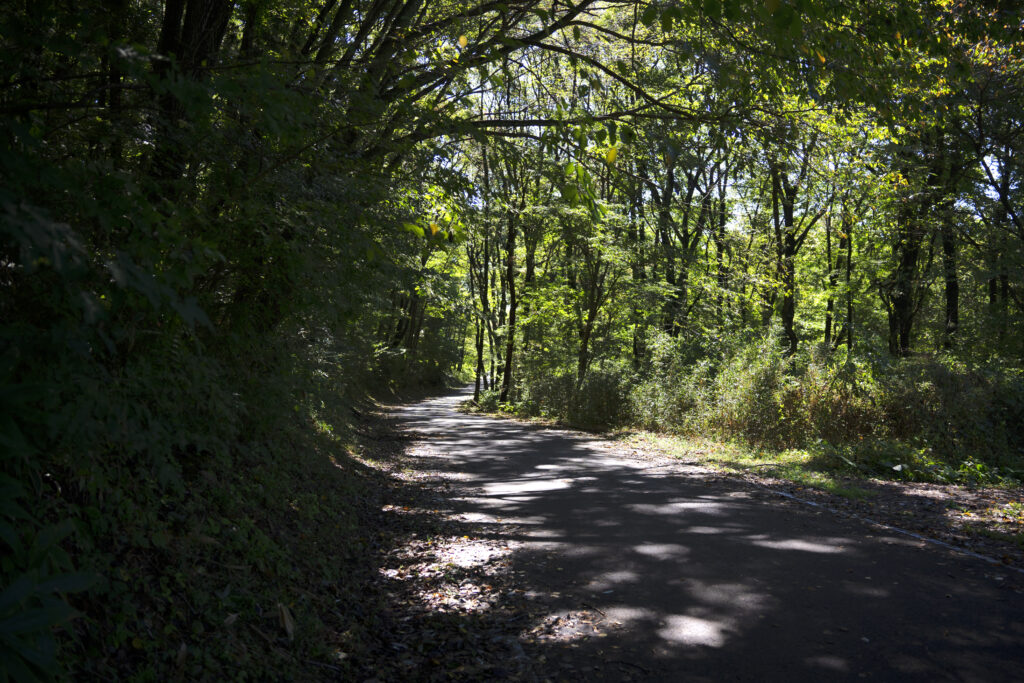
Some time ago, I wrote an article titled
"[Gagaku Tale 2: Why Gagaku Is Layered and Mysterious]".
“Layered.”
Layered sounds. Music layered with natural and environmental sounds. Music that layers people with nature.
Even the costumes in Gagaku include layered garments, known as kasane (重ね).
Take the jūni-hitoe, the twelve-layered court robe from the Heian period.
Colors are layered to express the seasons, to wear nature.
It reflects nature worship—a desire to wear, imitate, and become one with nature.
This aligns perfectly with the spirit of Gagaku.
Wearing nature through sound and color. I sensed a fundamental aesthetic in Japanese culture and creativity rooted in this act of layering.
I searched online using keywords like “layering,” “aesthetics,” and “Japan.”
There, I encountered an article from November 30, 2013, in Seigow Matsuoka’s series "Senya-Sensatsu."
It introduced the book "The Art of Layering—Reinterpreting Japanese Culture" (original 2008, republished in 2022) by Seiichi Fujiwara.
The book explores how kasane—layering—has been utilized in Japanese literature through six approaches:
(1) breaking and simplifying, (2) twisting and parodying, (3) playing and joking, (4) imitating and copying, (5) provoking and teasing, and (6) likening and symbolic seeing.
The final chapter discusses the philosophy of layering in depth.
Fujiwara explains how these techniques, when overlapped rather than opposed, enrich each other and produce a world that cannot exist through singularity alone.
He writes that even "minor streams" in culture—such as Kyōgen (comic theater) disrupting the formality of Noh—do not diminish the mainstream, but enhance it through co-existence. This is the essence of kasane—to layer without negation.
He also connects this to the deep currents of Japanese aesthetics, rituals, and even everyday customs—tracing back to the fusion of Shinto and Buddhism (shinbutsu shūgō).
And, according to Fujiwara, the most vivid expression of this principle of layering lies in the color aesthetics of layered garments developed during the Heian era, known as kasane no irome (重ねの色目).
If color layering through the jūni-hitoe represents the visual pinnacle of this tradition,
then could Gagaku be its auditory counterpart?
Indeed, kasane no irome often referenced plants and flowers, and colors would be changed with the seasons.
This suggests a culture that enjoyed overlapping with the rhythms of time and nature.
Fujiwara writes further:
“To develop such a complex and delicate aesthetic of attire requires a shared sensitivity to color, and a deeply rooted philosophy of color itself. Imagine official ceremonies or rituals where people dressed in such layered garments. The sound of rustling silk brings out the beauty of the colors. A space where color, sound, and even the subtle scents of dye coexist in harmony—this becomes a layered orchestra of its own.”
Naturally, the phrase “Japan’s oldest orchestra” came to mind—Gagaku.
In Gagaku’s performance space, sound, color, scent, and the four seasons overlap and resonate with one another.
In her work "The Spirituality and Ideal Sonic Space of Gagaku," Michiko Togi also discusses how Heian-era people valued the resonance between Gagaku and space itself.
Gagaku was not performed in space, but with space—with nature. It was inherently about layering with the environment.
This refined sensitivity of the Heian people continues to astonish scholars and musicians alike.
Why, then, is layering so fundamental to Japanese aesthetics and culture?

While continuing my exploration, I came across a paper by linguist Takayuki Ishii titled
"The Layered Orientation of Japanese Culture."
He explains how the phenomenon of overlapping permeates various aspects of Japanese life.
This “layered orientation” serves not just as a descriptive trait, but as a lens for understanding the multilayered structure of Japanese culture.
He even dares to say:
“I believe this layered orientation has the potential to save Japan.”
In the paper’s appendix, he notes:
“The overlapping of deities in illustrations of the Seven Lucky Gods suggests a form of polytheism and religious tolerance. This holds the potential for global peace.”
Reading this, I was struck by a wave of inspiration.
Yes—Gagaku, too, holds within it a vision of peace, harmony, mutual recognition, and co-existence.
Musicologist Taro Ishida writes:
“Gagaku is music born of nature worship.”
“It is a means for humans to communicate with nature.”
“It carries a message from people living 1400 years ago, directed at us today.”
He also says:
“I believe musicians have a responsibility to infuse musical forms and aesthetics with messages that transform society. It’s a lonely battle, and I wish for companions.”
As a writer, I feel called to be one of those companions.
To delve into layered thinking, the art of overlapping, and the aesthetics of kasane in Gagaku.
Seigow Matsuoka, in the very article I first mentioned, states:
“I have long insisted that the fundamental methods sustaining Japanese culture always involve matching, layering, competing, and aligning.
I’ve emphasized this approach as ‘the Japanese method’ for years, yet it remains poorly understood.”
Which came first: Gagaku or the Japanese method?
Just pondering that excites me.
Would you care to join me in exploring the “Layered Philosophy of Gagaku,”
and the deeper messages embedded within it?

Written by Atsuko Aoyagi / ao.Inc.
#dailythoughts #japanesetraditionalmusic #composition
#gagaku #composinggagaku #nonmusic #gagakuperformance
#filmmusic #cinematicmusic #spatialmusic #gagakustories #sidenotes
#layer #mysterious #shogun #taroishida #philosophy #aesthetics #nature worship